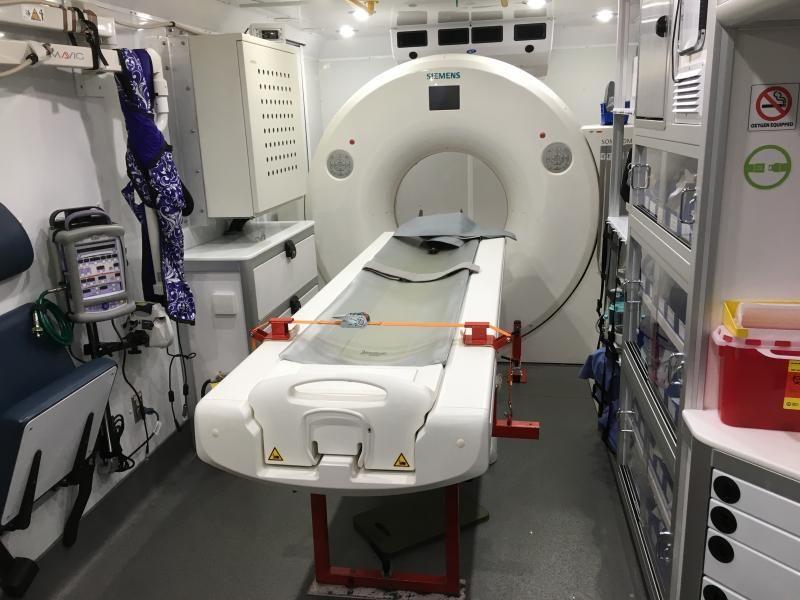The Rise Of Global Mobile Stroke Units

Stroke is a medical emergency condition that needs immediate treatment to save lives and prevent long-term disability. Timely treatment within the first few hours of onset of stroke symptoms can significantly improve patient outcomes. However, not all patients can reach specialized stroke centers within the golden hour window for treatment which is a major challenge worldwide. Mobile stroke units aim to address this challenge by bringing advanced stroke care to the patient's location. In recent years, these specialized ambulances have witnessed a rapid global rise and are revolutionizing stroke care across the world.
Mobile Stroke Units: A Game Changer in Pre-Hospital Stroke Care
Mobile Stroke Units are ambulances equipped with computed tomography (CT) scanners, ultrasound machines, and other vital medical equipment needed to diagnose and initiate treatment for acute ischemic strokes. They are staffed by multidisciplinary teams comprising of physicians, nurses, and paramedics trained in stroke care. Once dispatched, the mobile units can quickly reach the patient, perform on-site neurological examinations and imaging tests like CT scans to identify symptoms, find the cause, and decide on appropriate treatment. This allows for administration of clot-busting medications like intravenous thrombolysis at the site itself if needed, rather than waiting until the patient arrives at the hospital.
Studies have shown that mobile stroke units can substantially reduce time to treatment initiation. On average, they decrease door-to-needle times by around 30 minutes compared to standard ambulance transport. This pre-hospital diagnosis and treatment help expand the therapeutic window and improve outcomes in more patients. Several trials worldwide have demonstrated significant benefits of this model of care in safely delivering clot-busting drugs to more stroke patients within the optimal four and half hour timeframe.
Spread Of Mobile Stroke Care Across The Globe
Inspired by the success of early adopter programs in cities like Berlin, many countries are now establishing their own mobile stroke networks. In Europe, services have expanded to cities in Germany, Austria, Switzerland, Denmark and elsewhere. The United States is witnessing a rapid nationwide proliferation with over 30 regions operating mobile stroke units. In Middle-East, programs have launched in Dubai and Qatar. Countries like Japan, South Korea and Taiwan in Asia are also deploying these specialized ambulances. Even low-resource settings are exploring innovative models using telemedicine to deliver stroke expertise remotely via mobile units.
The Global Rise Of For-Profit Ambulance Services
With proven outcomes, mobile stroke units are fast emerging as the new standard of care. But building and sustaining such programs requires massive investments which public healthcare systems alone may not be able to provide. This has opened opportunities for private sector participation. A number of commercial companies are entering this space and offering mobile stroke unit services on a contractual basis.
For instance, the Mobile Stroke Team company based in Germany operates some of the largest commercial fleets in Europe. In the US, Acadian Ambulance has deployed over a dozen units across 5 states under a for-profit model. Similar commercial ambulance providers are coming up in other high-income countries and bringing private capital to strengthen pre-hospital systems. This public-private partnership model holds promise to universally spread equitable access to time-critical stroke treatment worldwide. However, policy makers will need to balance corporate interests with healthcare priorities to optimize patient outcomes.
Emerging Technologies To Further Advance Care
Researchers are continually working to leverage new technologies that can help mobile stroke units bridge more distances effectively. Telestroke capabilities allow onboard physicians to instantly share scans and get expert consultation from referral centers. This "virtual neurology" significantly expands the reach of scarce specialists. Drones and autonomous ambulances are being tested to transport specialists or miniaturized lab equipment rapidly to even more remote areas. Augmented reality tools assist paramedics in performing neurological exams precisely. Artificial intelligence may soon automate initial diagnosis from images captured on scene.
As 5G networks rollout globally, it heralds the era of connected ambulances that can leverage real-time big data to optimize routing and prioritize high-risk patients. Satellites could enable stroke diagnosis from paramedic-held devices even in most distant villages. Such cutting-edge innovations promise to deliver life-saving treatment potentially to anyone experiencing a stroke, anytime and anywhere in the future. Combined with mobile units, they may one day help eradicate geographical and socioeconomic disparities in acute stroke management globally.
Mobile stroke unit programs have proven tremendously impactful in transforming pre-hospital care over the past decade. Widespread adoption worldwide indicates growing recognition of both their clinical and cost-effectiveness. With ongoing improvements, these specialized ambulances may soon establish a revolutionary paradigm shift towards decentralizing complex emergencies away from hospitals. As technologies continue advancing stroke diagnostics and therapeutics, mobile stroke care empowers scaling up access across all communities sustainably. Together they fuel great hopes for lowering disability from one of the leading causes of death worldwide through assured early intervention.
Get more insights on Mobile Stroke Units
- Art
- Causes
- Crafts
- Dance
- Drinks
- Film
- Fitness
- Food
- Giochi
- Gardening
- Health
- Home
- Literature
- Music
- Networking
- Altre informazioni
- Party
- Religion
- Shopping
- Sports
- Theater
- Wellness
- IT, Cloud, Software and Technology


